“Oooh, Italy. What was your favorite part?” asked the unexpectedly friendly customs agent who welcomed my dad and I back into the United States.
It was a difficult question, for sure, after having spent two weeks exploring the entire length of the beautiful boot-shaped peninsula, soaking up breathtaking views, strolling across ancient stone pathways, and reuniting with family.
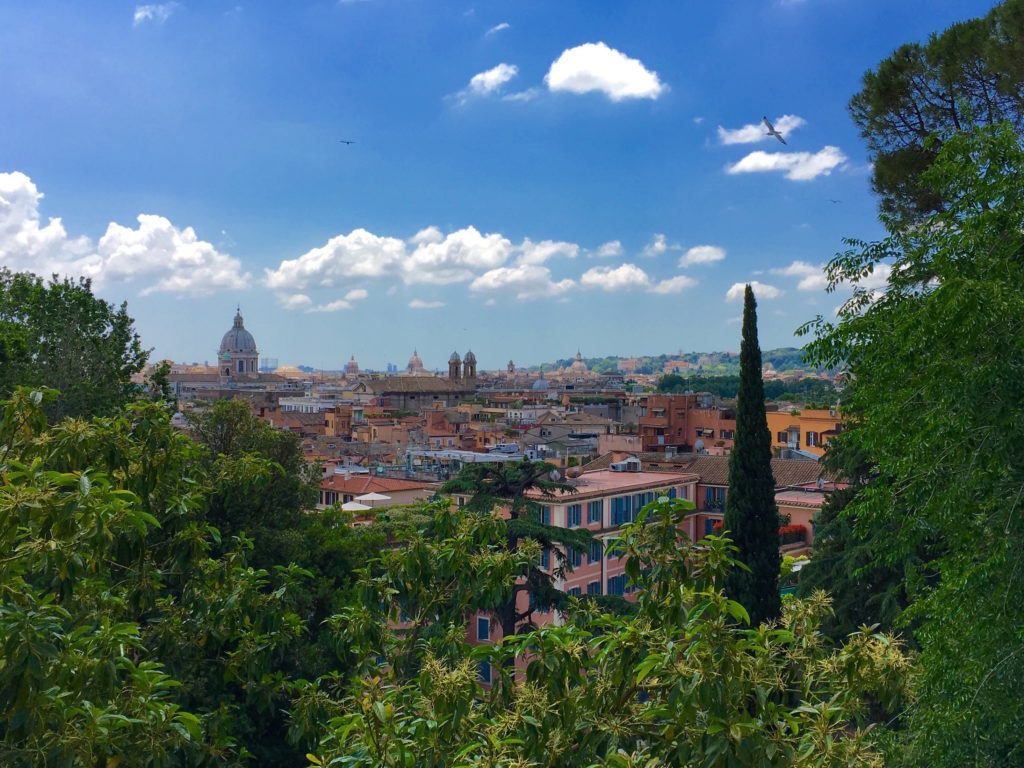
Photo by Sophie Pinton
My answer, though, was short and sweet and seemed to come out instinctively.
“The food!” I responded.
It was something the agent had probably heard hundreds of times from Americans coming home from abroad, but to me, it was an honest answer that embodied more than just gluttony.
Enjoying the diverse food of the country from Venice in the north to Bernalda in the south certainly helped me grow as a person — and I don’t just mean it expanded my stomach.
When we were asked if we were bringing anything back from Italy into the U.S., we avoided the opportunity to make a cheesy joke like “Only a couple more pounds!” I couldn’t help but think, however, about all of the other intangible gifts I was bringing home thanks to the incredible power of food to educate, express, and unite.
Here’s what I learned about Italian food and culture as I explored The Boot from its mountainous frills at the top all the way to its coastal arch at the bottom.
Northern Italy
City: Madonna di Campiglio in the Dolomite Mountains
Meal: Colazione (Breakfast)
My experience: Get familiar with strong coffee and learn to really enjoy the flavors of espresso. Most Italians sipped on their coffee and nibbled on pastries and other breads with jam. They do not eat a huge breakfast like we’re used to; their main meal is lunch.
However, since their breakfast provides room for splurging on Nutella-filled baked goods, I learned to appreciate sweets in the morning, which actually helped ward off cravings later in the day.
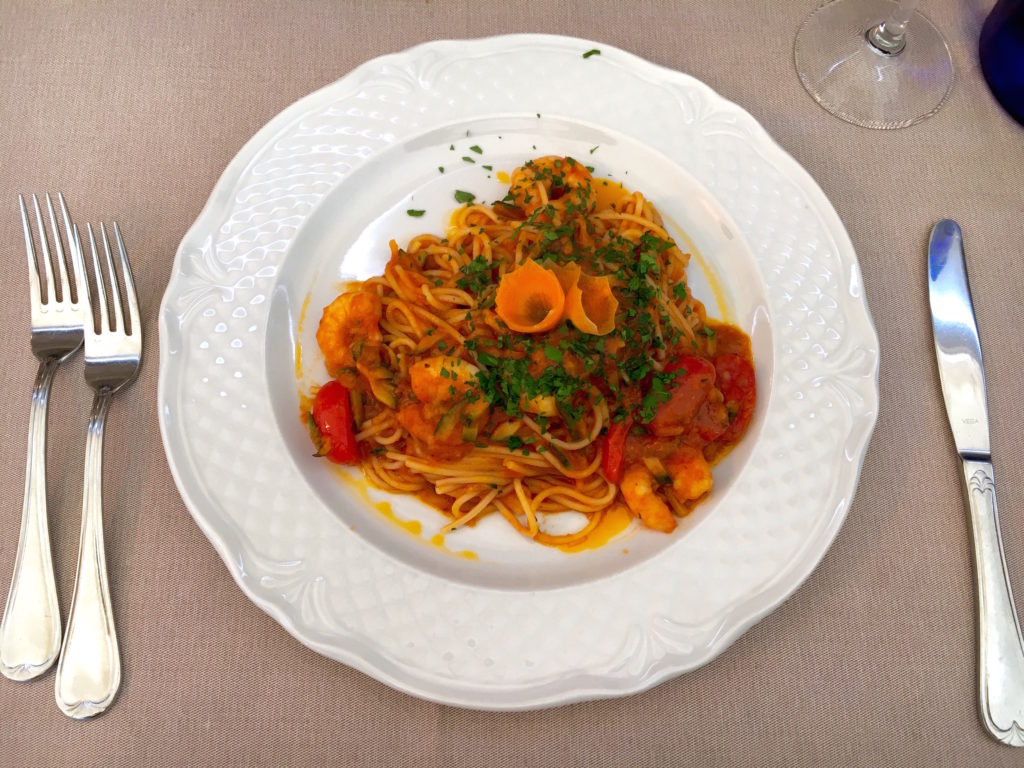
Photo by Sophie Pinton
City: Trento
Meal: Spaghetti con gamberi, zucchine e pomodorini (Spaghetti with shrimp, zucchini, and cherry tomatoes)
My experience: Every trip to Italy needs a good plate of pasta. This one was my first of the trip, so it tasted extraordinarily magical. Here’s what I noticed in particular:
First, olive oil is supposed to have deep flavor. The oil drizzled within this sauce added a whole other dimension to the dish. Find good olive oil and use it with love.
Second, pasta is supposed to be cooked “al dente” or “to the tooth.” This means that the pasta noodle should still be firm to the bite, creating a chewy — not soggy — texture. Takeaway: Don’t overcook your pasta. Ever.
Third, the presentation of pasta is a true art form. I wish I was able to see how the chefs delicately twirled the noodles onto the plate for serving, or how they sprinkled fresh herbs or spiral cut the carrot for topping. Notice how the sauce is already mixed with the spaghetti, not slopped on top like we see in the U.S.
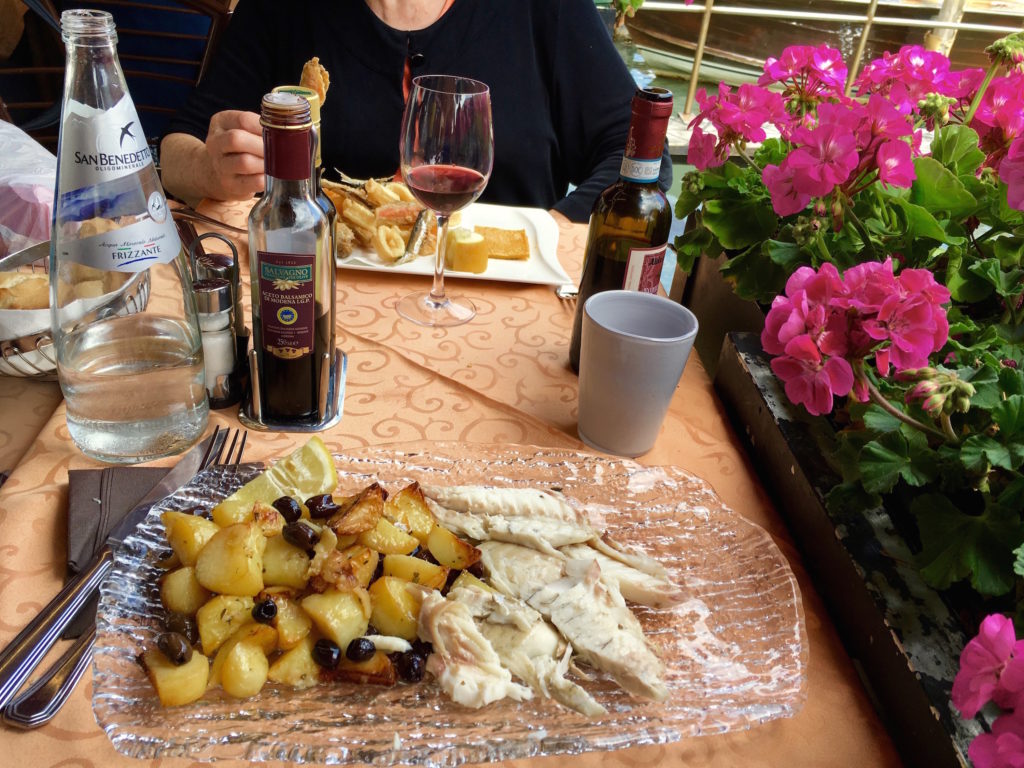
Photo by Sophie Pinton
City: Venezia (Venice) on the Grand Canal facing the Rialto Bridge.
Meal: Pesce del Giorno (Fish of the Day) with roasted potatoes and olives
My experience: It just feels natural to order seafood when sitting beside water. This dish was presented as a whole fish at first with the waiter allowing me to inspect it to confirm its freshness. Then he took it aside and filleted and deboned it for me.
I’ll forever remember the state of serenity I felt as I ate the fresh fish accompanied by views of relaxing gondola rides and busy vaporettos (water taxis) coasting down the canal.
My family and I must have sat in this spot for nearly two hours, but we were not nagged by the waiters or other customers to hurry up. Italians like to savor their food, and they allowed us to take the meal slowly as well. Grazie mille.
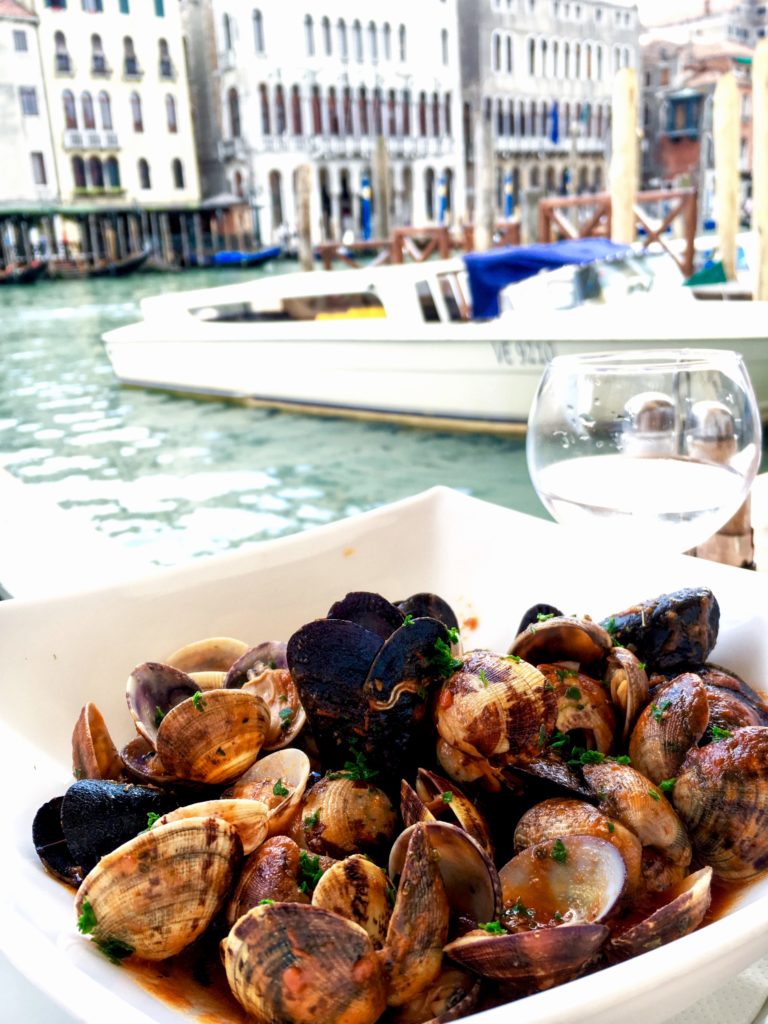
Photo by Sophie Pinton
City: Venezia, part II. We returned to the same place for lunch the next day because we had such a memorable meal. We had the same waiter, who remembered us and welcomed us back with delight.
Meal: Cozze e vongole alla marinara (Mussels and clams marinara)
What I Learned: Sometimes restaurants really are just as good the second time around. I was wary of eating at the same place again when we had so many options, but the good food, good service, and good views reminded me that we had found a reliable place that avoided the stress of lurking tourist traps. We sat again for an hour and a half picking at the plump mussels and clams and savoring the garlicky marinara.
Central Italy
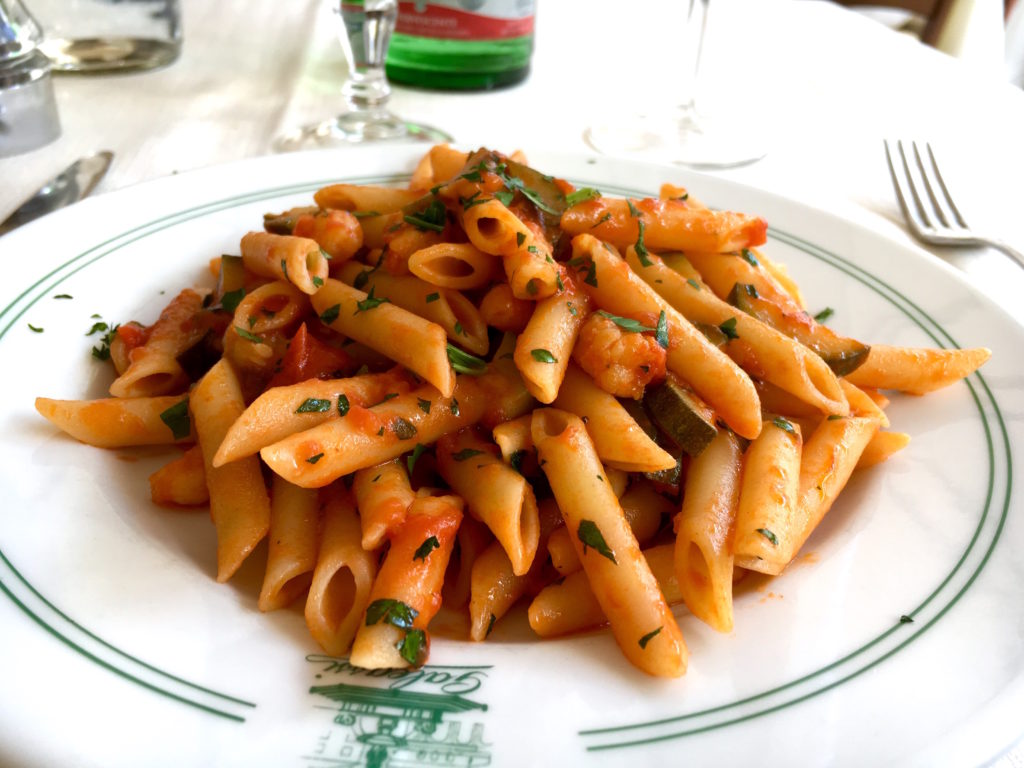
Photo by Sophie Pinton
City: Roma (Rome)
Meal: Mostaccioli con gamberi, zucchine e pomodorini
What I Learned: And sometimes, when you order a similar meal at a different restaurant in hopes of having the same experience, you get disappointed. This dish was very similar to my first pasta in Italy, but it lacked that same pizzazz (although it looked stunning).
How to avoid disappointment: Don’t start searching for your ideal restaurant when your stomach is already growling. You will be pulled in by waiters looking to seat as many tourists as possible on a beautiful piazza where you will pay for the quality of the view more than the quality of the food. This pasta was still delicious, but its competition had been more memorable.
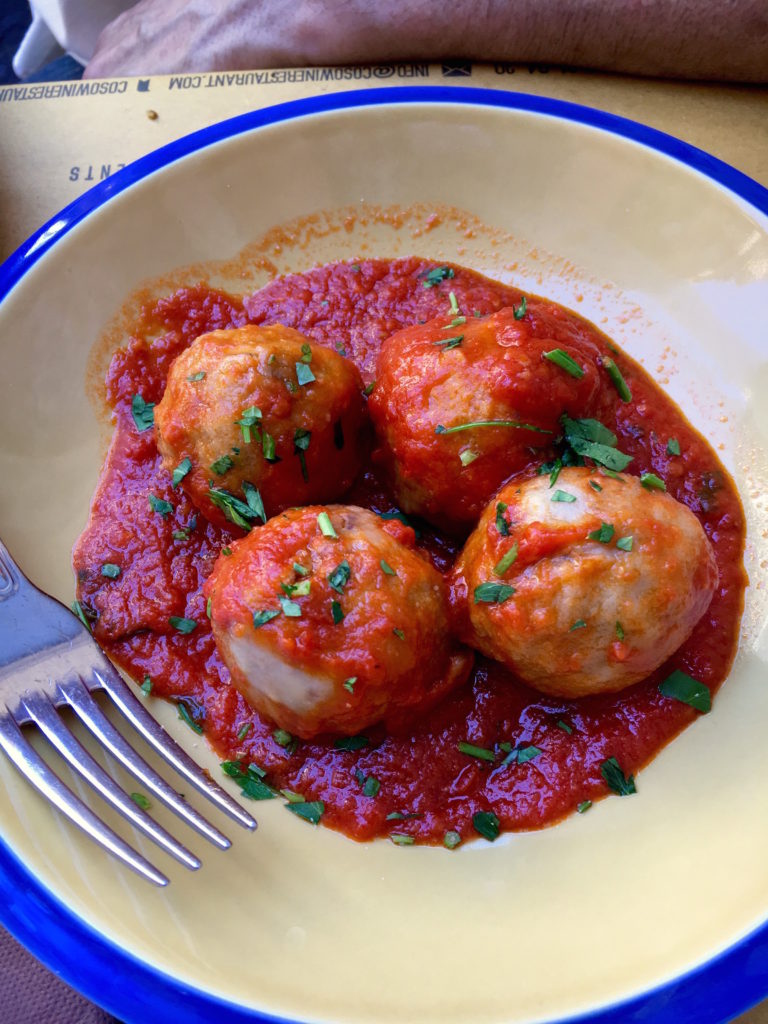
Photo by Sophie Pinton
City: Rome
Meal: Two antipasti: Carciofo alla Romana and a Frittata (Roman artichokes and an omelette); polpette (meatballs)
What I Learned: Explore the backstreets of town and discover where the locals eat for the most authentic food. This restaurant was hidden in a corner street and the menu was presented as a small sheet of paper written only in Italian — a big hint that this isn’t one of the main tourist locations.
Another tip: Choosing to sit al fresco allows you to experience the character of the street you’re on, while sitting inside can give you a look at the restaurant’s unique flare. Both are fascinating.
Southern Italy
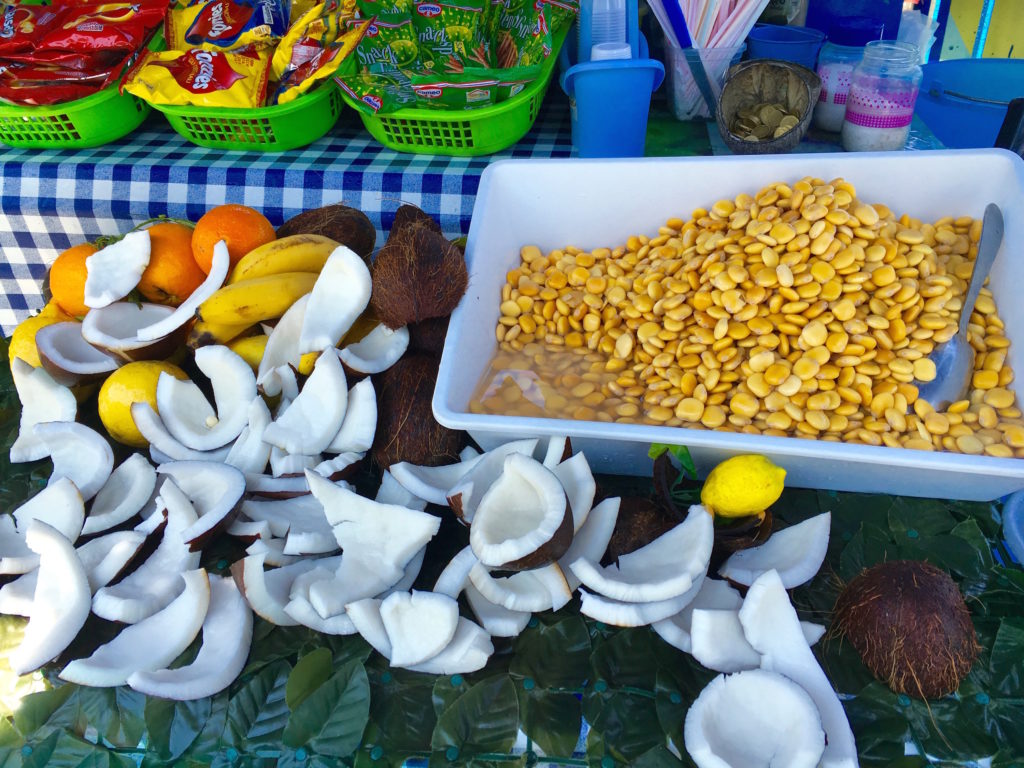
Photo by Sophie Pinton
City: Napoli (Naples)
Meal: Street food — Lupini beans and taralli (similar to baked circular breadsticks)
What I Learned: Be brave and let a vendor woman shove lupini beans and a taralli in your mouth — her fingers and all. People like to share their culture with others in any way they know how, even if it means exposing you to some Neapolitan bacteria along with your salty, crunchy bean and biscuit mouthful.
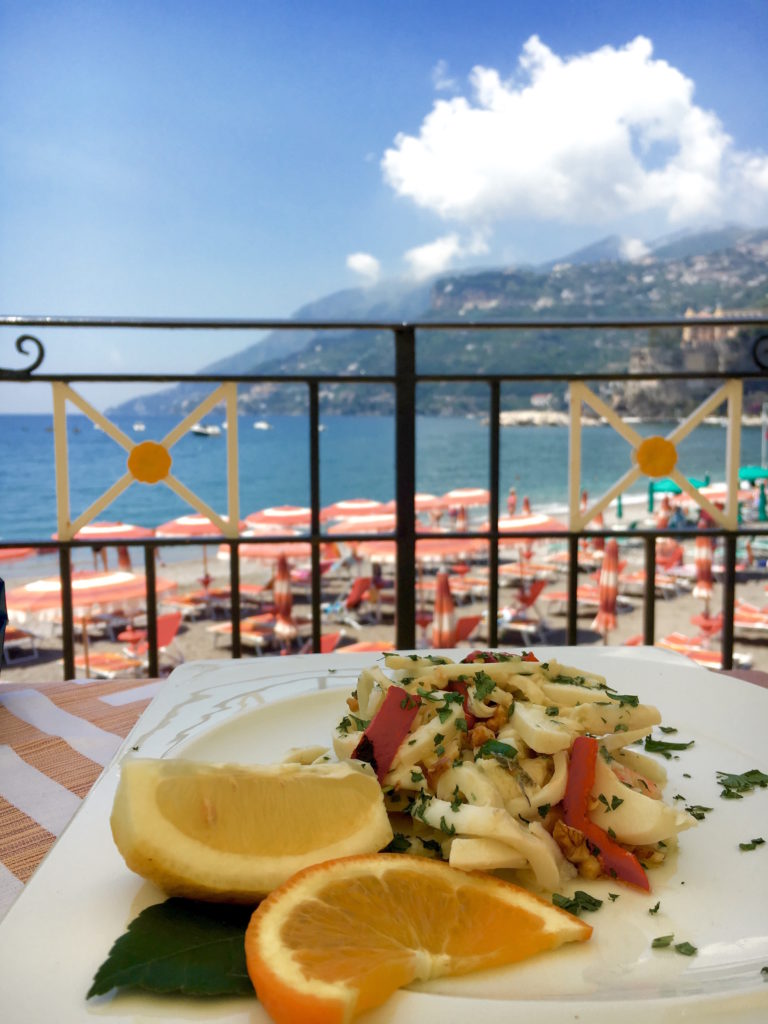
Photo by Sophie Pinton
City: Maiori on the Amalfi Coast
Meal: Seafood salad; Homemade pasta with mussels and clams
What I Learned: Even when you feel like you might be sick of seafood, order it because you’re near the Mediterranean Sea. You won’t be disappointed. And even when you feel like you can’t (or shouldn’t) take another bite of pasta, order the freshly made noodles. These had herbs INSIDE the noodle.
Eating with a view of the Amalfi Coast (or any view of Italy) will help you slow down. Maybe this is why Italian meals go on forever — the country has too many beautiful sights to keep the conversation flowing. That, and it feels good to sit and rest after walking nearly 10 miles a day.
Northern Italy (returning home)
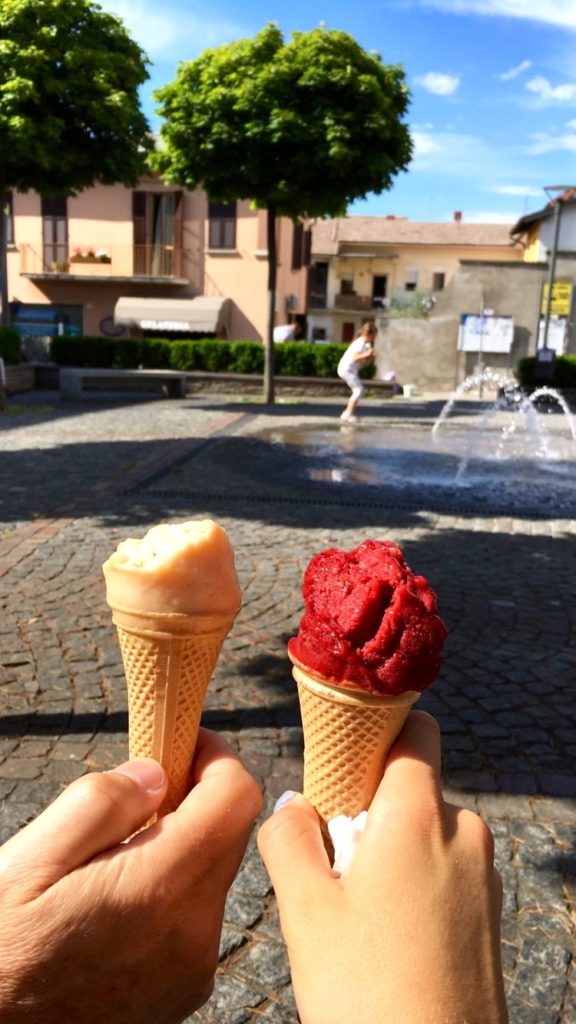
Photo by Sophie Pinton
City: Cardano al Campo near Milan
Meal: Gelato — Melone and Frutti di Bosco (Berries)
What I Learned: It is acceptable to get gelato at any time of day no matter how old you are. From small toddlers to old men with canes, from sunrise to sunset (and much after), you can always find someone licking a sweet cone. With the summer heat setting in, nothing was more refreshing than an icy, fruity gelato to celebrate an unforgettable trip.


